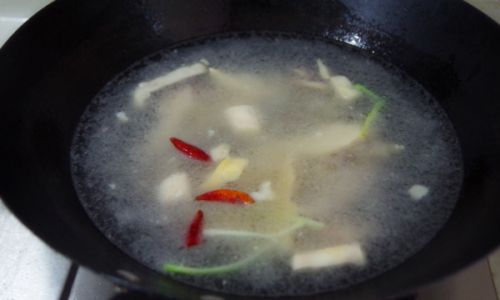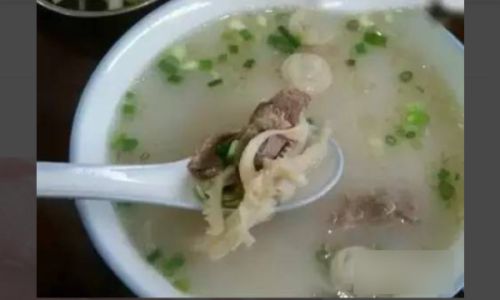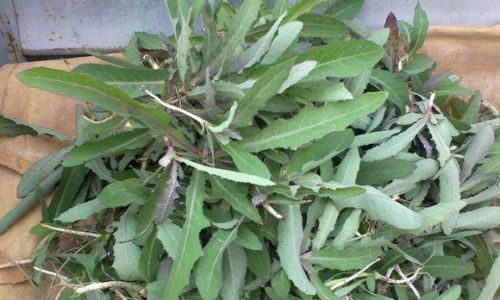Introduction
Goat meat soup, known for its rich flavor, nutritious value, and comforting warmth, is a staple in many cuisines worldwide. From the highlands of Tibet to the bustling streets of the Middle East, goat meat soup is cherished for its ability to nourish the body and soul. One of the defining characteristics of a well-made goat meat soup is its milky white hue, which signifies not just its appearance but also its depth of flavor and richness. Achieving this perfect, creamy consistency can be a challenge, but with the right techniques and ingredients, anyone can master the art of making a rich and milky white goat meat soup.
Understanding the Science Behind Milky White Soup
Before diving into the recipe, it’s essential to understand the science behind how a soup attains its milky white appearance. This color is a result of a process called emulsification, where fats and proteins in the broth are dispersed uniformly throughout the liquid, creating a smooth, opaque texture. In the case of goat meat soup, the collagen and fats from the bones and meat, combined with prolonged simmering and gentle stirring, contribute to this emulsification.

Choosing the Right Ingredients
-
Goat Meat and Bones: The quality of the goat meat and bones is crucial. Fresh, high-quality goat meat with plenty of marrow-filled bones will yield a more flavorful and nutritious broth. Look for meat with a bright color and a pleasant aroma, avoiding any that smell off or have a dull appearance.
-
Vegetables: Aromatics such as onions, carrots, celery, and garlic add depth and complexity to the soup. These vegetables also contribute natural sugars that help caramelize during cooking, enhancing the broth’s flavor.
-
Spices and Herbs: Depending on your preferred cuisine, you might use spices like cumin, coriander, black pepper, bay leaves, or thyme. These not only flavor the soup but also aid in digestion and add layers of taste.
-
Water: Use good-quality water for your soup base. Filtered or spring water is preferable as it lacks impurities that can affect the taste.
-
Acid: A small amount of acid, such as vinegar or lemon juice, helps extract more flavor from the bones and meat by breaking down proteins and fats.
Preparing the Goat Meat and Bones
-
Soaking: Begin by soaking the goat bones and meat in cold water for at least 30 minutes to an hour. This helps draw out blood and impurities, which can cause the soup to have a murky appearance and off flavor.
-
Blanching: After soaking, rinse the bones and meat thoroughly and place them in a pot of boiling water. Blanch for about 5-10 minutes, skimming off any foam or scum that rises to the surface. This step further cleanses the meat and bones and removes excess fats and impurities.
-
Rinsing: Once blanched, rinse the bones and meat under cold running water to remove any remaining impurities and set them aside.
Building the Flavor Foundation
-
Sautéing the Aromatics: In a large, heavy-bottomed pot or Dutch oven, heat a small amount of oil over medium heat. Add chopped onions, carrots, celery, and garlic. Sauté until the vegetables are soft and slightly caramelized, about 5-7 minutes. This caramelization adds sweetness and depth to the broth.
-
Adding the Goat Meat and Bones: Once the vegetables are sautéed, add the prepared goat meat and bones to the pot. Make sure they are evenly distributed to ensure even cooking.
-
Deglazing: Pour in a small amount of water or broth, scraping the bottom of the pot to loosen any bits of caramelized vegetables stuck to the surface. This adds additional flavor to the soup.
Simmering to Perfection
-
Adding Water and Seasonings: Pour in enough water to fully submerge the bones and meat, leaving about an inch of space at the top of the pot to prevent boiling over. Add your spices and herbs, as well as a splash of vinegar or lemon juice.
-
Bringing to a Boil: Bring the mixture to a rolling boil over high heat. This initial boil helps release the impurities and surface fats, which can be skimmed off.
-
Reducing to a Simmer: Once boiling, reduce the heat to low and let the soup simmer gently. The key to achieving a milky white broth is slow, steady cooking. A simmer is gentle enough to extract flavors and fats from the meat and bones without breaking them down too quickly, which can lead to a cloudy soup.

-
Skimming: Throughout the simmering process, periodically skim off any foam or fat that rises to the surface. This ensures a clearer, cleaner broth.
-
Gentle Stirring: Occasionally, stir the soup gently. Stirring helps distribute the fats and proteins more evenly, promoting emulsification and contributing to the milky white appearance.
Adding Richness and Depth
-
Adding More Vegetables: After about an hour of simmering, you can add additional vegetables like potatoes, turnips, or rutabagas. These vegetables will add more flavor and nutrients to the soup.
-
Checking the Broth: Taste the broth periodically and adjust the seasoning as needed. You may need to add more salt, pepper, or herbs to enhance the flavor.
-
Simmering Further: Continue to simmer the soup for at least 3-4 hours, or even longer if you have the time. The longer it simmers, the more flavors will meld together, and the broth will become richer and more concentrated.
Finishing Touches
-
Removing the Bones and Meat: Once the soup has reached your desired consistency and flavor, remove the bones and meat from the pot. Let them cool slightly, then separate the meat from the bones and shred or chop it into bite-sized pieces. Discard the bones and any large pieces of vegetable matter.
-
Adjusting the Consistency: If the soup is too thick, you can add a bit more water or broth. If it’s too thin, let it simmer for a little longer to reduce and concentrate the flavors.
-
Adding the Meat Back In: Return the shredded meat to the pot and let it simmer for another 10-15 minutes to allow the flavors to meld together.
-
Serving: Ladle the soup into bowls, garnish with freshly chopped herbs like parsley or cilantro, and serve hot. Accompany with crusty bread, rice, or a side salad for a complete meal.
Troubleshooting Tips
-
Cloudy Broth: If your broth is cloudy, it may be due to impurities or excessive stirring. Ensure you blanch and rinse the bones and meat thoroughly, skim off any foam during cooking, and stir gently.
-
Weak Flavor: If the flavor is not as strong as you’d like, consider using more bones, simmering for a longer time, or adding additional spices and herbs.
-
Greasy Broth: Excessive fat can be removed by skimming more frequently during cooking or refrigerating the soup overnight and removing the solidified fat from the surface before reheating.
Conclusion
Making a rich and milky white goat meat soup is an art that requires patience, attention to detail, and a love for culinary experimentation. By understanding the science behind emulsification, choosing high-quality ingredients, and following a meticulous cooking process, you can create a soup that is not only visually stunning but also bursting with flavor and nutritional benefits. Whether you’re serving it to family and friends or enjoying it as a comforting meal for one, a perfectly made goat meat soup is sure to leave a lasting impression. So, gather your ingredients, roll up your sleeves, and embark on a culinary journey to master the art of making a rich and milky white goat meat soup.




0 comments